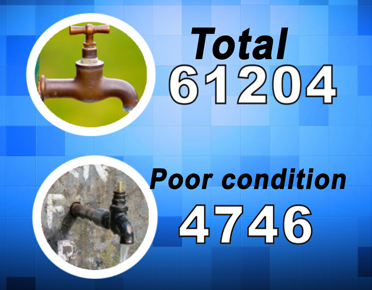 Except for Haa, Paro and Dagana, the remaining 17 Dzongkhags have water coverage of above 90 percent, according to Rural Water Supply Inventory conducted by Public Health and Engineering Division, last year.
Except for Haa, Paro and Dagana, the remaining 17 Dzongkhags have water coverage of above 90 percent, according to Rural Water Supply Inventory conducted by Public Health and Engineering Division, last year.
The inventory says 83.3 percent of 80,926 rural households across the country have access to piped-water supply.
The rest, 16.97 percent, which is about 13,000 households are deprived of piped-water supply.
The inventory also shows there are 5,420 rural water supply schemes across the country covering 94.14 percent of rural households.
More than 61,000 taps have been put in place of which about 57,000 taps are functioning.
Observing the Water World Day yesterday at Walakha Nunnery Shedra in Punakha, health officials said taking up community ownership by forming committees and individual initiatives can help protect maintain and manage clean water usage in the community.
 The report also pointed that there were only 1,569 water committees, indicating a low-level of community ownership over the facility.
The report also pointed that there were only 1,569 water committees, indicating a low-level of community ownership over the facility.
The Chief Engineer, Rinchen Wangdi said water projects in the country do not last long due to lack of protection of water sources.
“Poor community ownership will lead to scheme getting defunct, as no one in particular will be willing to take responsibility to manage the facility put in place by the government.”
Rinchen Wangdi said the inventory was conducted to establish authentic and realistic baseline data for rural water supply schemes in the country.
The inventory also found there were 61,204 tap stands, put in place, for 5,420 schemes to supply clean piped-drinking-water to 76,180 rural households. But only 57,739 tap stands were found to be in a good condition and remaining 4,746 tap stands were to be useless. About 6,448 tap stands, which were in good condition, do not have running water.
Health officials said an individual initiative, or having a water committee in the locality to protect, clean, maintain and manage water usage in the community, would contribute towards having sustainable water.









